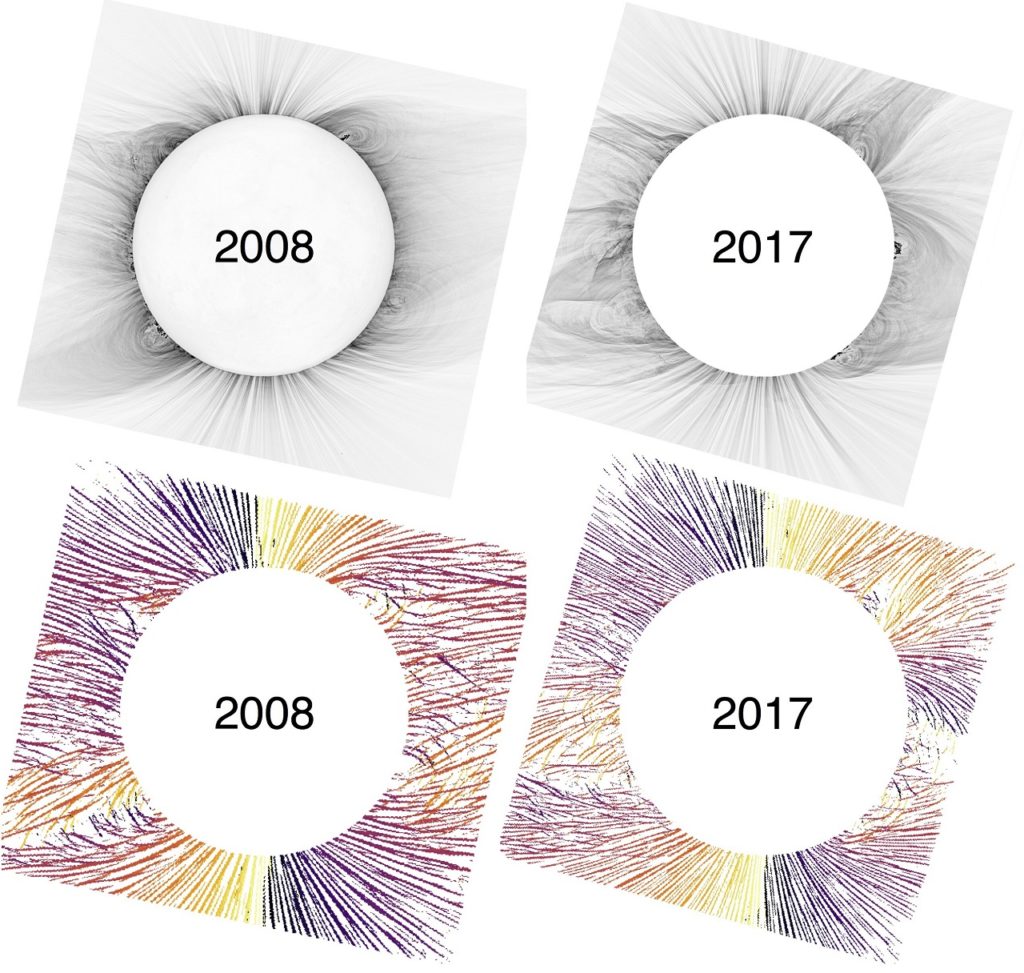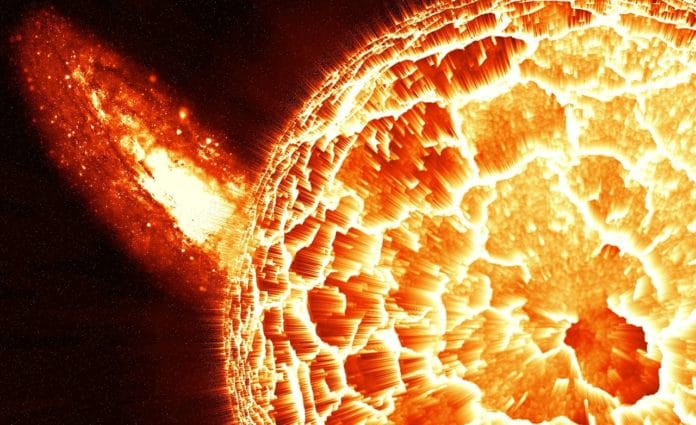The Sun’s corona is the outermost part of the Sun’s atmosphere. And he stream of energized, charged particles, primarily electrons, and protons, flowing outward from the Sun’s corona is called the solar wind. The solar wind travels through the solar system at speeds as high as 900 km/s and a temperature of 1 million degrees (Celsius). It is made of plasma.
The properties of the solar corona are a result of the sun’s complex magnetic field, which is produced in the solar interior and broadens outwards.
In a new study, an IfA graduate student Benjamin Boe has measured the shape of the coronal magnetic field with higher spatial resolution. He used total solar eclipse observations as data.
Significant technological advances in recent decades have shifted much of the focus to space-based observations at wavelengths of light not accessible from the ground, or too large ground-based telescopes such as the Daniel K. Inouye Solar Telescope on Maui. Despite these advances, some aspects of the corona can only be studied during total solar eclipses.

That’s the reason astronomers choose to make observations during solar eclipses for over 20 years. The supposed “solar wind sherpas” venture to every part of the globe chasing total solar eclipses, transporting sensitive scientific instruments on planes, helicopters, cars, and even horses to reach the optimal locations. These solar eclipse observations have prompted achievements in divulging a portion of the physical processes of the physical procedures characterizing the corona.
Boe said, “The corona has been observed with total solar eclipses for well over a century, but never before had eclipse images been used to quantify its magnetic field structure. I knew it would be possible to extract a lot more information by applying modern image processing techniques to solar eclipse data.”
For this study, Boe traced the pattern of the distribution of magnetic field lines in the corona. For this, he used an automatic tracing method applied to images of the corona taken during 14 eclipses across the past two decades. This data provided the chance to study the changes in the corona over two 11-year magnetic cycles of the sun.
He detected that the pattern of magnetic fields of the sun’s corona is highly structured, with structures seen at size scales down to the resolution limit of the cameras used for the observations. He also observed that the pattern changes with time. To quantify these changes, he measured the magnetic field angle relative to the sun’s surface.
During periods of minimum solar activity, the corona’s field emanated almost straight out of the sun near the equator and poles, while it came out at a variety of angles at mid-latitudes. During the solar activity maximum, on the other hand, the coronal magnetic field was far less organized and more radial.
Boe said, “We knew there would be changes over the solar cycle, but we never expected how extended and structured the coronal field would be. Future models will have to explain these features in order to understand the coronal magnetic field fully.”
The outcomes of the study challenge the current assumptions used in coronal modeling, which often assumes that the coronal magnetic field is radial beyond 2.5 solar radii. Instead, this work found that the coronal field was often non-radial to at least four solar radii.
Boe said, “These results are of particular interest for solar wind formation. It indicates that the leading ideas for how to model the formation of the solar wind are not complete, and so our ability to predict and defend against space weather can be improved.”
Journal Reference:
- Benjamin Boe et al., Coronal Magnetic Field Topology from Total Solar Eclipse Observations. DOI: 10.3847/1538-4357/ab8ae6
